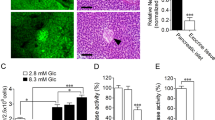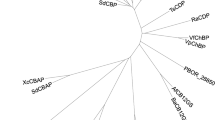Abstract
SOME time ago1, we observed that incubation of some tissues of the rat with mannose in a mixture of Ringer-Locke solution and phosphate buffer at pH 7.4 resulted in an increase of the ascorbic acid value, as determined by the usual titrimetic technique with 2: 6-dichlorophenol indophenol2. The experiments in vitro were supported by experiments in vivo, in which it was shown that the injection of mannose into the rat also caused an increase in the ascorbic acid content of some of its tissues3. Cell-free extracts were also obtained from germinating Phaseolus mungo, which were likewise capable of converting mannose into ascorbic acid4.
This is a preview of subscription content, access via your institution
Access options
Subscribe to this journal
Receive 51 print issues and online access
$199.00 per year
only $3.90 per issue
Buy this article
- Purchase on Springer Link
- Instant access to full article PDF
Prices may be subject to local taxes which are calculated during checkout
Similar content being viewed by others
References
Guha and Ghosh, NATURE, 134, 739 (1934).
Ghosh and Guha, J. Indian Chem. Soc., 12, 30 (1935).
Guha and Ghosh, NATURE, 135, 234 (1935).
Guha and Ghosh, NATURE, 135, 871 (1935).
Euler, Gartz and Malmberg, Biochem. Z., 282, 402 (1935).
Author information
Authors and Affiliations
Rights and permissions
About this article
Cite this article
GUHA, B., GHOSH, B. Biosynthesis of Ascorbic Acid. Nature 138, 844–845 (1936). https://doi.org/10.1038/138844b0
Issue Date:
DOI: https://doi.org/10.1038/138844b0
This article is cited by
-
Über die Muttersubstanz und Lokalisation der Askorbinsäuresynthese im Rattenorganismus
Zeitschrift für Die Gesamte Experimentelle Medizin (1942)
-
Über die Muttersubstanz und Lokalisation der Askorbinsäuresynthese im Rattenorganismus
Zeitschrift für die gesamte experimentelle Medizin (1940)
-
Role of Manganese in the Biological Synthesis of Ascorbic Acid
Nature (1939)
-
Zur Biochemie des Jensen-Sarkoms
Zeitschrift für Krebsforschung (1937)
Comments
By submitting a comment you agree to abide by our Terms and Community Guidelines. If you find something abusive or that does not comply with our terms or guidelines please flag it as inappropriate.



